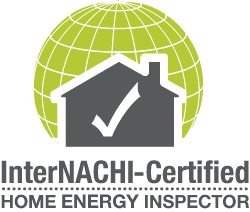Whether your home’s sewer lines are attached to a public sewer or a septic system, you’ll still need a sewer inspection. In public sewer systems, local utility companies are responsible for maintaining and inspecting your sewer system. While in the case of a septic system, the homeowners are to upkeep and deal with any issues. Both cases have their own inspection needs and are treated differently.
Regardless of that, how would you know it’s that time of the year? When your sewer lines could be at risk and need your attention. Guess what? The right time to get a sewer inspection is either based on its damage condition or weather conditions. Your specific sewer inspection can also vary based on regular, annual, or biannual stages.
To answer how long does it take; it seriously varies. It depends on various factors, including the size and layout of your septic or sewer system, the extent of its damage or blockages, the type of methods used, weather conditions, accessibility of pipes and components, and more – we’ll discuss exhaustively in the later section.
Blessed Assurance Home Inspection guides you through the sewer inspections. We’ll discuss when to get one and how long does a sewer inspection take. Besides that, this blog holds more than the basics. So read till the end to find out what you might not know before about sewer inspections.
Right Time to Get a Sewer Inspection
Getting regular sewer inspections is essential for wastewater management and the optimal working of your plumbing infrastructure. And knowing when to schedule a sewer inspection will help you stay proactive and aware of potential issues. However, as we mentioned earlier, it all depends. On damage conditions, weather conditions. And your inspections need a routine checkup, annual inspection, or biannual assessment. So, going with this context, let’s discuss further.
Based On Damage Conditions
Your sewer lines need inspection for various issues like foul odors, gurgling sounds, slow drains, or sewage backups. Keep an eye out for these signs of damage as they indicate an inspection requirement. If you’ve recently undertaken construction or landscaping projects, inspect your sewer lines just after that. as the damaged or displaced sewer pipes call for a sewer inspection.
Based On Weather Conditions
Different regions have different climates that majorly affect your inspection needs. In colder areas, winters are challenging due to freezing temperatures. Leading to contraction or potential breakage of sewer pipes. Heavy rainfalls or stormy seasons cause stress over septic systems. This leads to increased risks of flooding or blockages. Severe weather conditions always compromise your sewer lines. This is where sewer inspections help you save a great deal of money. Inspecting the strength and intactness of your sewer pipes and lines will help you stay ahead of any issues.
Regular Inspection
Just like any other home element, your sewer system also needs routine maintenance. Scheduling a sewer inspection will help you identify potential sewer concerns beforehand. It’s useful in preventing costly repairs in the long run. If you are planning to buy or sell a property, make sure to spend some time on sewer inspections. It will take less of your time and money but save you repetitive expenses and effort.
Annual Or Biannual Inspection
Maintaining the smooth flow and catching issues before they expand are two major interests of a sewer inspection. If your home is attached to a septic system, annual inspections are mandatory for you. This includes checking the septic tank for sludge buildup, inspecting the drain field, and ensuring the overall system’s strength. And considering biannual sewer inspections save you costly surprises and unexpected failures and extends your systems’ lifespan and durability.
How Long Does a Sewer Inspection Take
It really depends. Your property’s size, sewer lines’ length, inspection method, inspecting company, and many more factors joined together or separately contribute to this. To discuss “how long does a sewer inspection take,” let’s dig into these factors.
Property Size
Larger properties need more time to inspect the sewer lines – as there’s more to cover. It also includes the distance from the main building to the sewer connection point. This impacts the overall inspection time.
Layout of Sewer Lines
The length, size, and layout of your sewer system greatly add to the time spent in the sewer inspection. The longer and more complex sewer lines with bends and turns take more time to inspect than the shorter and simpler ones. That’s not it. The diameter of the sewer pipes also affects the ease of sewer inspection.
Type of Inspection Method
The type of method used during inspection also counts to what time it will consume. When it’s only a visual inspection, it will need less time to inspect. However, when the inspections are conducted through advanced methods like thermal imaging or sewer cameras, it will take more time. It’s also because a detailed internal inspection is time-consuming. Inspection methods like sonar testing and trenchless technology greatly impact your inspection timeliness.
Accessibility to Pipes and Components
If the sewer pipes are located in hard-to-reach areas or have hindered access, it will take the inspectors more time to navigate the area and then inspect. On the flip side, easily reachable areas and not facing any obstacles during inspections save the inspectors more time.
What’s More?
Sewer inspections are a universal need for all homeowners – no matter what your sewer system setup is. This blog gave you informative and valuable insights into when to decide to get a sewer inspection. And what factors count in how long does a sewer inspection take. We suggest you look for the signs of sewer damage or potential problems discussed in this blog. Also, schedule your inspection keeping in view your home’s requirements, damage, and weather conditions. Scroll through our blog sections to read everything inspection.









